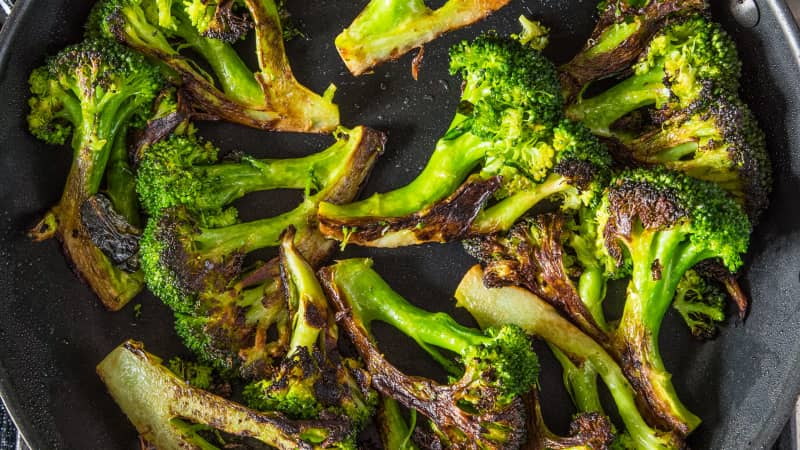My Goals and Discoveries
Maximum contact with skillet
We cut the crowns into wedges to create plenty of flat sides that sit flush with the surface of the skillet.
Optimal heat transfer for better browning
Once the water has evaporated and the broccoli is lightly steamed, the oil fills any gaps between the broccoli and the skillet for optimal heat transfer and browning.
Toppings that enhance
Liquid finishes wash away browning, so we opt for dry garnishes, sprinkled both over and under the broccoli, to add flavor and texture and preserve color.



